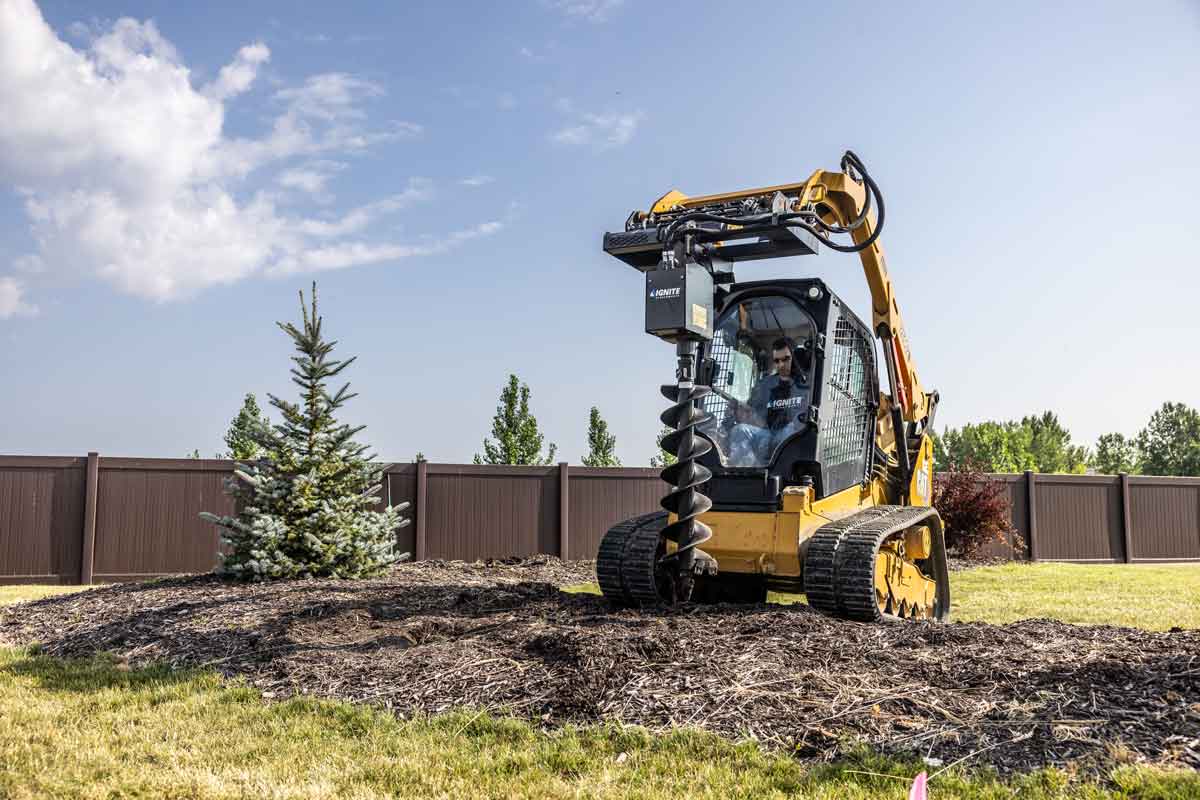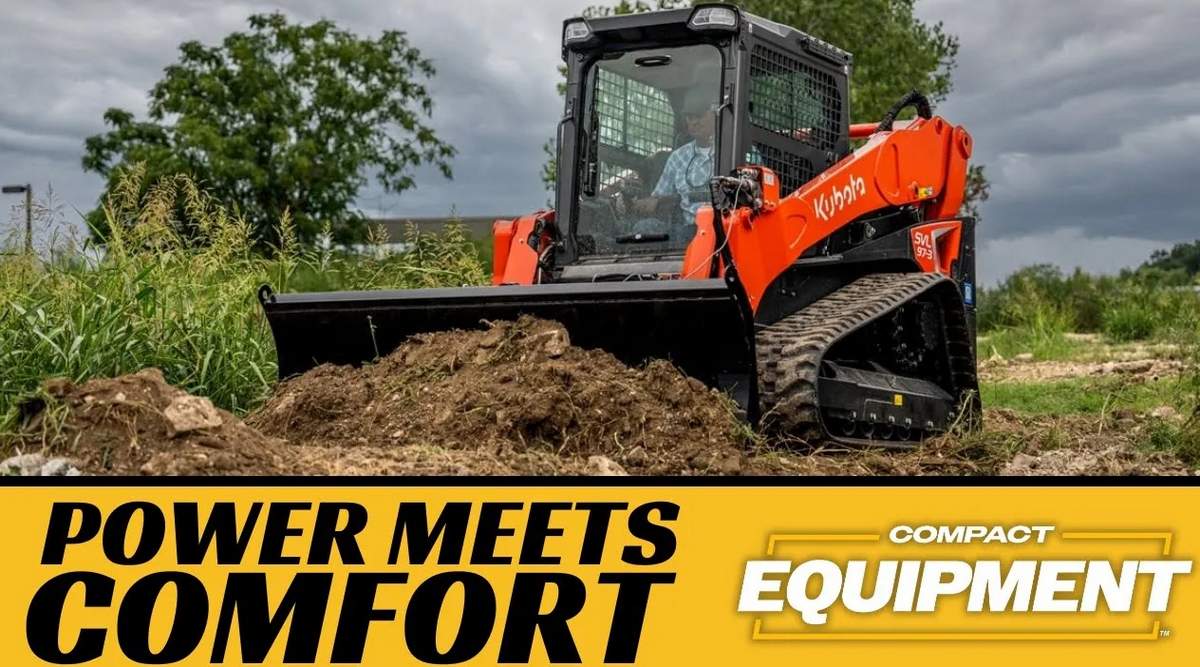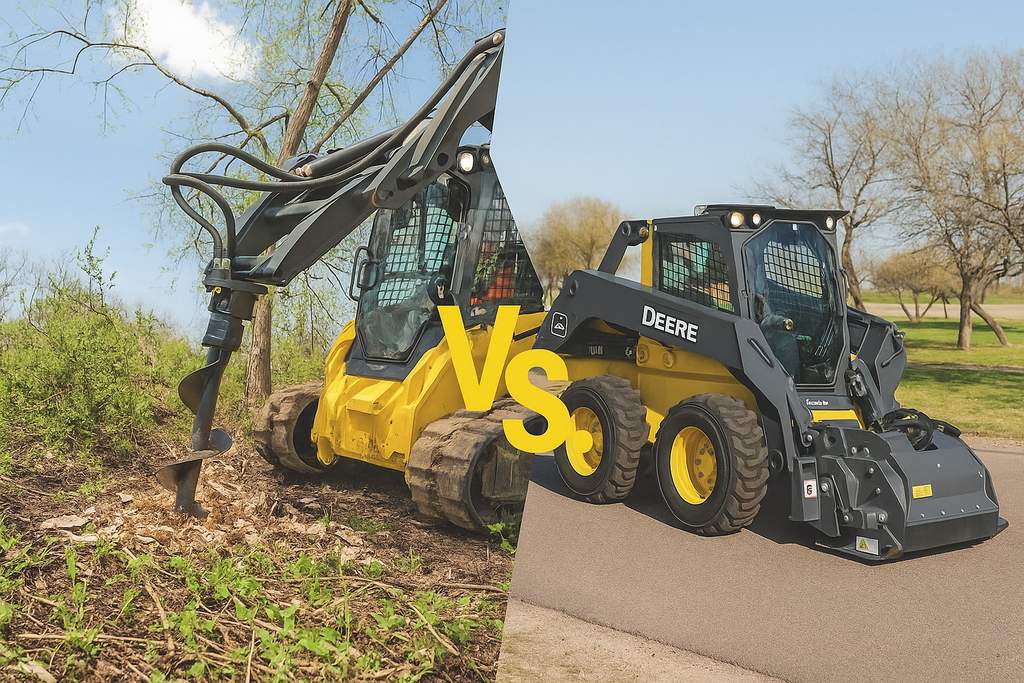Attachment Choices Aplenty

 When utility contractors need to install electrical, plumbing, phone, cable or fiber optic lines for residential and commercial properties, more of them are turning to compact loaders and excavators, which provide several attachments for completing the job. Over the years, utility contractors have become more productive by using compact equipment such as compact utility loader (CUL), skid steer and compact track loaders, as well as compact excavators, says Justin Odegaard, Bobcat Co. Attachment Product Representative.
When utility contractors need to install electrical, plumbing, phone, cable or fiber optic lines for residential and commercial properties, more of them are turning to compact loaders and excavators, which provide several attachments for completing the job. Over the years, utility contractors have become more productive by using compact equipment such as compact utility loader (CUL), skid steer and compact track loaders, as well as compact excavators, says Justin Odegaard, Bobcat Co. Attachment Product Representative.
With compact loaders and excavators, contractors do more than one task because of the number of attachments they can utilize. Odegaard says this compact equipment is also ideal for utility contractors because it enables them to cost-effectively extend their utility installation offerings. Instead of buying several dedicated pieces of equipment, contractors can spend thousands less by renting attachments for their loaders and excavators.
Why Tracks?
The size of a compact loader or excavator is an obvious benefit of the machine. For utility contractors working in established areas where they must access tight spaces, compact equipment allows them to go where larger machines can’t. But Odegaard says loaders and excavators with track undercarriages provide additional benefits, including improved traction, increased productivity, better flotation and reduced ground disturbance.
Since most contractors work on soft surfaces when performing utility installation, tracks are a definite plus. Because tracks distribute the machine’s weight over a greater area, they reduce ground pressure, minimizing ground disturbance. For contractors installing service lines on established lawns, this means less worries about performing repair work after the job’s done, Odegaard says. A CUL or compact track loader also allows landscapers to work in ground conditions that might prove difficult for wheeled loaders. Track loaders’ improved traction and flotation enable contractors to work more effectively in wet and muddy ground conditions.
Compact track loaders and CULs are offered by a number of manufacturers. Bobcat Co., for example, manufactures two CUL models, six compact track loader models and 11 excavator models, all of which have track undercarriages. The machines also can be paired with a number of attachments, including several that can be used for utility installation. Of the more than 80 types of attachments Bobcat manufactures, Odegaard says the trencher, vibratory plow, boring unit, auger, combination bucket, digger, backhoe, angle broom, pallet forks and hydraulic breaker are among the most popular with utility contractors.
Trencher
The trencher attachment is likely the most recognizable utility installation attachment. For years, utility contractors have turned to the trencher attachment because of its strength, ease of use and versatility. Another reason the trencher is commonly seen on utility installation jobs is because it’s usually readily available for rent at most dealerships or rental stores, and it’s relatively inexpensive when compared to other attachments.
Odegaard says there are also several advantages to using a trencher attachment. While the trencher works well in all soil conditions, he says it also has the power and strength to dig through extremely rocky soil. Contractors can equip their trencher attachment with several different teeth and chain configurations in order to correctly match it to the soil conditions in which they’ll be digging. The Bobcat trencher attachment has dig depths from 2 to 5 ft and allows utility installation specialists to trench close to buildings, fences and other objects with the removal of its auger.
Because the trencher cuts through the ground and displaces a strip of soil, Odegaard says it’s better used in non-established areas where there isn’t any sod or seed and where ground disturbance isn’t a worry.
Vibratory Plow
Industry watchers are seeing more utility contractors using vibratory plows mainly because of increased awareness about the attachment’s primary benefit — minimal ground disturbance to lawns, Odegaard says. This efficient Bobcat attachment places utility lines up to a maximum depth of 18 in. below ground level by slicing a thin blade into the ground and placing the line directly into the trench with a single pass. The vibratory plow saves time because unlike the trencher where contractors must dig the trench first before installing the line, the vibratory plow. can do both at the same time.
“Less ground disturbance is huge because you don’t have to go back, put the pipe in or level out the ground you dug up,” Odegaard says. “You’re installing as you go.”
Boring Unit
Another popular attachment for installing utility lines is the boring unit. When contractors are faced with placing utility lines in areas where they’re unable to trench or plow, many of them turn to the boring unit. This attachment enables them to place service lines under sidewalks, driveways and other structures.
 So how does this unique attachment work? Well, Odegaard says a screw-type boring bit is driven through the ground as the machine is driven forward. As this happens, the ground is compacted outward to create a tunnel under the obstacle. Once the boring bit reaches the other side, a reaming bit is then installed and the utility line is connected to the swivel on the reaming bit. The machine is then backed up, and the rotating reamer bit further compacts the soil as it pulls the utility line through the enlarged tunnel.
So how does this unique attachment work? Well, Odegaard says a screw-type boring bit is driven through the ground as the machine is driven forward. As this happens, the ground is compacted outward to create a tunnel under the obstacle. Once the boring bit reaches the other side, a reaming bit is then installed and the utility line is connected to the swivel on the reaming bit. The machine is then backed up, and the rotating reamer bit further compacts the soil as it pulls the utility line through the enlarged tunnel.
Attachments from Start to Finish
Besides the trencher, vibratory plow and boring unit, contractors can utilize several other attachments with their compact loaders or excavators to help complete utility installation jobs from start to finish. For example, Odegaard says a combination bucket can be used to carry or move dirt and rocks and to backfill trenches.
Once a utility installation job is complete, contractors want to leave the site looking just as good or better than when they arrived. Attaching an angle broom to a loader enables utility installation specialists to sweep dirt, rock and other debris from sidewalks, driveways and parking lots. Other accessory-type attachments they might use during a project are pallet forks for hauling materials, a hydraulic breaker for breaking through rock in extremely difficult soil conditions or a stump grinder for cutting and removing tree roots that are in the way of utility lines.
There’s no question that utility contractors have several choices when it comes to attachments for their compact loaders and excavators. As with any application, Odegaard says contractors should make sure they match the right tool to the job by considering possible challenges and whether they’ll be working in mostly new construction or established areas.
“A utility contractor will also want to consider what type of soil conditions are found in the region they’ll be working in before choosing their installation method,” Odegaard says.
Tara Deering-Hansen is a Technical Writer for Two Rivers Marketing, Des Moines, Iowa.





Comments are closed here.